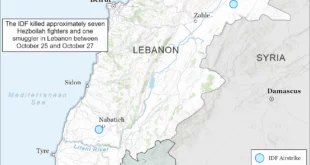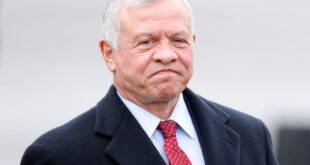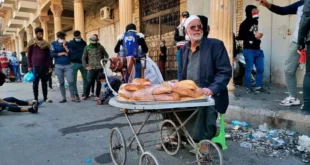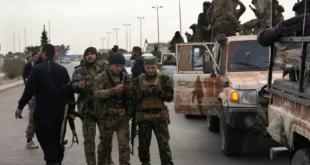 BEIRUT (Reuters) – A Lebanese opposition tent city, which began as a powerful outcry to topple the government a year ago, has dwindled to a symbolic presence, but the protest by Hezbollah and its Christian ally still paralyses central Beirut.
BEIRUT (Reuters) – A Lebanese opposition tent city, which began as a powerful outcry to topple the government a year ago, has dwindled to a symbolic presence, but the protest by Hezbollah and its Christian ally still paralyses central Beirut.
The boisterous crowds that gathered daily last December to demand Prime Minister Fouad Siniora’s removal from his office nearby have long since melted away, leaving scores of empty tents guarded by a few dozen young men with walkie-talkies.
However symbolic, the opposition insists it will keep up its round-the-clock vigil in two main squares in the heart of Beirut until the political crisis over Lebanon’s next president and over its own share in power is resolved.
“Nothing has changed, we won’t leave until the government falls. This is a symbolic presence, but we can bring thousands if need be,” said Emile Hashem, 45, who is responsible for the camp area manned by supporters of Christian leader Michel Aoun.
Most of the orange tents, adorned with pictures of Aoun, are empty during the day. Some have television sets and small piles of mattresses. A washing machine stands outside one tent.
Hashem says only 100 supporters of Aoun’s Free Patriotic Movement sleep in 50 of the 125 tents every night.
“If Siniora likes his chair (job) so much, we are ready to carry him and the chair back to his house,” said Audette Batsh, a 44-year-old Aoun supporter who left her home in Tripoli last December and has been sleeping in the camp ever since.
Hezbollah occupies a nearby square filled with mostly empty tents guarded by members wearing caps marked “maintain discipline”. The Shi’ite group refused permission for reporters to enter the area cordoned off with barricades and guardposts.
UNEASY STANDOFF
Troops with armored vehicles and barbed wire have kept the protesters away from government headquarters in the Ottoman-era Serail building since the protest began on December 1 last year.
No unauthorized vehicles are allowed to enter the protest area. People who work in downtown offices, boutiques and cafes have to park their cars hundreds of meters away and walk.
The protest in a smart area rebuilt from civil war ruins by slain ex-premier Rafik al-Hariri has spelt disaster for many restaurants and nightclubs where tourists used to swarm.
“This year we lost $3 million,” said Tony Bassil, chief financial officer of the trendy Asian-style Buddha Bar, which has been shut since the opposition vigil began.
For several months a Hezbollah tent was roped to its front door — which once admitted an average of 1,200 customers a day, who generated about $14,000 a day. Bassil said the bar had been forced to lay off 60 percent of its 145 employees.
Political banners, stickers and slogans are plastered over many of the downtown area’s sleek, honey-colored buildings.
Only a few of the Parisian-style pavement cafes with wicker chairs on cobbled streets have stayed open, but their owners say the crowds may stay away even if the political crisis eases.
“Lebanese people have lost the habit of going downtown. Even if the sit-in ends today, it’ll take a long time for the area to recover,” said Pierre Dagher, manager of Duo restaurant.
“The Lebanese don’t go out just to eat, but to see and be seen. So when the area’s empty, they won’t go there,” he added.
Other owners said they had kept their restaurants and cafes open in hope the sit-in would end soon — some said they would shut down permanently if it was not over by New Year’s Day.
Lebanon’s rival politicians have failed to pick a successor to pro-Syrian President Emile Lahoud, whose term expired last week. They may be able to agree on army chief General Michel Suleiman to replace him, but for now the tent city remains.
“We are held hostage to the crisis and we are paying for it,” said Jean Bassili, who owns two downtown restaurants.
 Eurasia Press & News
Eurasia Press & News



